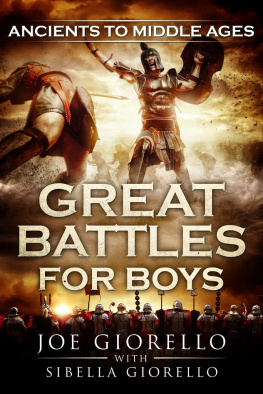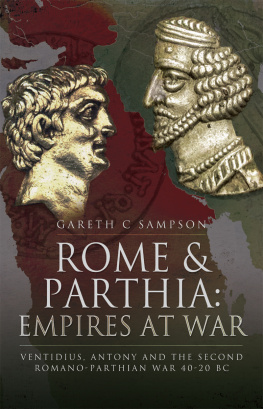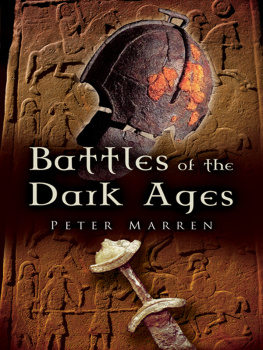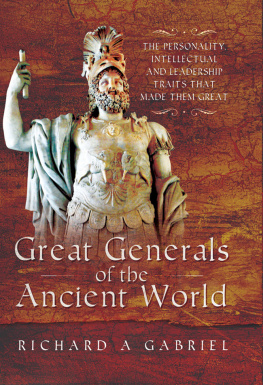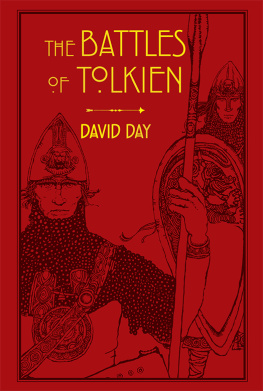Gabriel W. Thurston - Victories and Battles of the Late Middle Ages: The Military secrets of ancient times
Here you can read online Gabriel W. Thurston - Victories and Battles of the Late Middle Ages: The Military secrets of ancient times full text of the book (entire story) in english for free. Download pdf and epub, get meaning, cover and reviews about this ebook. year: 2020, genre: Romance novel. Description of the work, (preface) as well as reviews are available. Best literature library LitArk.com created for fans of good reading and offers a wide selection of genres:
Romance novel
Science fiction
Adventure
Detective
Science
History
Home and family
Prose
Art
Politics
Computer
Non-fiction
Religion
Business
Children
Humor
Choose a favorite category and find really read worthwhile books. Enjoy immersion in the world of imagination, feel the emotions of the characters or learn something new for yourself, make an fascinating discovery.

- Book:Victories and Battles of the Late Middle Ages: The Military secrets of ancient times
- Author:
- Genre:
- Year:2020
- Rating:3 / 5
- Favourites:Add to favourites
- Your mark:
- 60
- 1
- 2
- 3
- 4
- 5
Victories and Battles of the Late Middle Ages: The Military secrets of ancient times: summary, description and annotation
We offer to read an annotation, description, summary or preface (depends on what the author of the book "Victories and Battles of the Late Middle Ages: The Military secrets of ancient times" wrote himself). If you haven't found the necessary information about the book — write in the comments, we will try to find it.
Gabriel W. Thurston: author's other books
Who wrote Victories and Battles of the Late Middle Ages: The Military secrets of ancient times? Find out the surname, the name of the author of the book and a list of all author's works by series.
Victories and Battles of the Late Middle Ages: The Military secrets of ancient times — read online for free the complete book (whole text) full work
Below is the text of the book, divided by pages. System saving the place of the last page read, allows you to conveniently read the book "Victories and Battles of the Late Middle Ages: The Military secrets of ancient times" online for free, without having to search again every time where you left off. Put a bookmark, and you can go to the page where you finished reading at any time.
Font size:
Interval:
Bookmark:
Victories and Battles of the Late Middle Ages
The Military secrets of ancient times
Gabriel W. Thurston
All rights reserved
Gabriel W. Thurston , 2018
Akula Bite PBS, 2019
No part of this book may be reproduced for commercial distribution.
Designed by:
Karl Dortberg
Don Donovan
Edited by:
Alex Frost
Fotos by:
Gina Smith
Tanya Dolski
Sam Sanderson
Philip Norris
The battles of the late Middle Ages were particularly bloody. The number of people who took part in them could reach several thousand, and military tactics and the best weapons turned them into a real massacre.
In the book "Victories and Battles of the Late Middle Age" you will get acquainted with the greatest battles and conquests of the period from the end of the twelfth to the beginning of the fifteenth centuries.
Content:
Medieval Japan and the Battle of Dannoura in 1185
Two periods in the history of medieval Japan. Compared to other civilizations of the East (like China or India), Japan is considered a young country. Its history, according to the Japanese themselves, begins with the reign of the legendary emperor Jimmu, namely from the 7th century BC, and is really and reliably divided into the era of ancient and early medieval society, spanning over a thousand years of our era. and the time of the shogunates, which began after the Battle of Dannoura, i.e. from the end of the XII century.
And in that and in other periods, the emperor remained the traditional head of society. He was considered a special, sacred figure. The Japanese thought that their emperors descended from the sun goddess Amaterasu, who gave the first ruler three of her favorite things, three "divine treasures": a bronze mirror, jasper beads and a sacred sword. The round mirror symbolized the sun itself and the human soul, the sword - the moon, a flash of lightning and security, beads - all the virtues and the power of foresight. All things were kept in the palace of the emperors.
The place and role of the emperor in state life during the two named periods changed greatly. But they were always very influenced by clans - powerful and connected by kinship or personal military loyalty of the group.
Since the end of the XII century in the political life of the country, the shoguns began to play the main role. Literally this word means "military leader". The title arose just at the end of the 12th century, when the latter defeated the latter in the struggle and clashes between two large military groups, Taira and Minamoto. They achieved the title of shogun from the emperor and soon became the main power in the country with their own capital, court, taxes, officials, and an army. They overthrew the ancient tribal aristocracy, took away its influence and power. But they did not concern the sacred functions of the emperor, although they did not give him real power.
Samurai. Since that time, the samurai have become the main support of the shoguns and, in general, the main military force in the country. It was with their hands and swords that the Minamoto achieved victory. The word "samurai" comes from the verb meaning "to serve a great man", "to serve the leader." Samurai were first recruited from wealthy peasants, domestic servants, and then more and more samurai children continued the work of their fathers.
Gradually, an unwritten set of rules of conduct for the samurai was formed, which was called the "path of the warrior", or bushido. Loyalty, duty, modesty, courage, bravery, a sense of honor, self-control were strictly required from a real samurai. Their primary virtues were loyalty and contempt for death. In ancient Japanese books, it is recalled that their ancestors said: "We will not die in the world, but we will die protecting our sovereign. If we go to sea, our bodies will sink into the abyss. If we go into the hills, our remains will be overgrown with grass." ...
A true samurai, going on a march at the call of the master, made three vows: to forget your home forever, forget about your wife and children, forget about your own life. Before the battle, the samurai loudly called his name, tried to challenge a worthy opponent to a duel. The head of the enemy was considered an honorable trophy. She was necessarily chopped off and carried or taken to the leader, the head of the clan.
For the service the samurai received lands, gifts, titles. They spent part of the money on good weapons and equipment. By the X century. hundreds of sq. km of untouched land remained in the east of the country. It was there that the samurai detachments first of all appeared. They were recruited from there to protect the central and western regions. From there came two powerful rivals, the struggle between which largely determined the life of the samurai in the 11th-12th centuries. These are clans, i.e. tribal groups, Taira and Minamoto "houses".
The cult of the sword. Then and in subsequent times, swords were perceived as living, sacred objects. They were the honor of a warrior, so to part with the sword or desecrate it meant tarnishing his honor. To this day - such is the strength of tradition - before forging a sword of the old type, blacksmiths undergo a special ritual purification and wear sacred robes during work. In terms of strength and sharpness, swords forged during the period of the events described surpass the works of masters of all countries and eras.
How is it known about the Battle of Dannoura. Most of the two famous military epics - "The Tale of the House of Taira" and "The Tale of a Great World", which arose soon after the events and were supplemented for more than a hundred years. They name names, talk about many specific situations, especially focusing on tragic ones. The portraits of the leaders of the military clans-houses are convexly drawn, and even more vividly are the samurai ideas and traditions. So, how did contemporaries imagine this famous event?
Rivalry between Minamoto and Taira. These two military clans began to actively manifest themselves on the historical scene from the end of the 10th century. Both clans were related to the imperial family by origin. Actually, one of the representatives of the Taira house was sent to the east to keep order there. But soon he became more needed in the south and west. There were pirates on the coast of Japan, and he had to be guarded. This is what Tyra did. And Minamoto kept order in the east and north. For a long time they served the rulers together.
Their representatives received positions and ranks. But Tyra was stronger. It was to them that they began to mainly turn from the imperial court for all sorts of military services and pay with estates, land. Tyr had 500 estates in his hands in different regions, i.e. more than half of the land of the entire country.
In the middle of the XII century. The Minamoto tried to change the situation, a riot began, as a result of which many noble warriors from this camp died. However, the children survived. One of them, then 13, Yoritomo, was sent into exile. There he met a monk who began to persuade him to speak out against Taira. The monk even went to see the monk sovereign, i.e. to the emperor who abdicated the throne and became a monk, as has long been the tradition. He was practically in exile. Tyra did not reckon with him.
Yoritomo receives the Monk Emperor's blessing to fight. The monk brought this decree: "In recent years, the Taira do not honor the power of the emperors, arbitrarily administer affairs in the state ... I command you, hoping for the protection of the gods, to exterminate our enemies, crush the Taira family. Achieve victory and restore the former glory of your family."
It is said that Yoritomo hid the decree in a brocade case, hung this case around his neck and never parted with it.
This gave a boost. The Minamoto first of all found companions in the east of the country, where they were from, i.e. in the east of the island of Honshu, in a land far from sophisticated capitals and therefore called "barbaric". Tyr had powerful supporters in the west. In fact, under their hand was the imperial court with a boy-emperor at its head. However, Minamoto's forces grew rapidly, they began to engage in battles on the outskirts of Taira's possessions and often defeated their warriors, seized their estates. The head of the Taira clan thought it best to leave the capital together with the young emperor and his entourage. The Minamoto gradually overtook them and drove them to the coast. Former Tyr supporters joined their units. Now the whole of Japan, the widest groups of the population, is involved in the war. She became the most famous of all the wars between samurai of different clans. Its decisive point was the naval battle of Dannoura. It took place on March 24, 1185 in the Shimonoseki Strait.
Next pageFont size:
Interval:
Bookmark:
Similar books «Victories and Battles of the Late Middle Ages: The Military secrets of ancient times»
Look at similar books to Victories and Battles of the Late Middle Ages: The Military secrets of ancient times. We have selected literature similar in name and meaning in the hope of providing readers with more options to find new, interesting, not yet read works.
Discussion, reviews of the book Victories and Battles of the Late Middle Ages: The Military secrets of ancient times and just readers' own opinions. Leave your comments, write what you think about the work, its meaning or the main characters. Specify what exactly you liked and what you didn't like, and why you think so.

